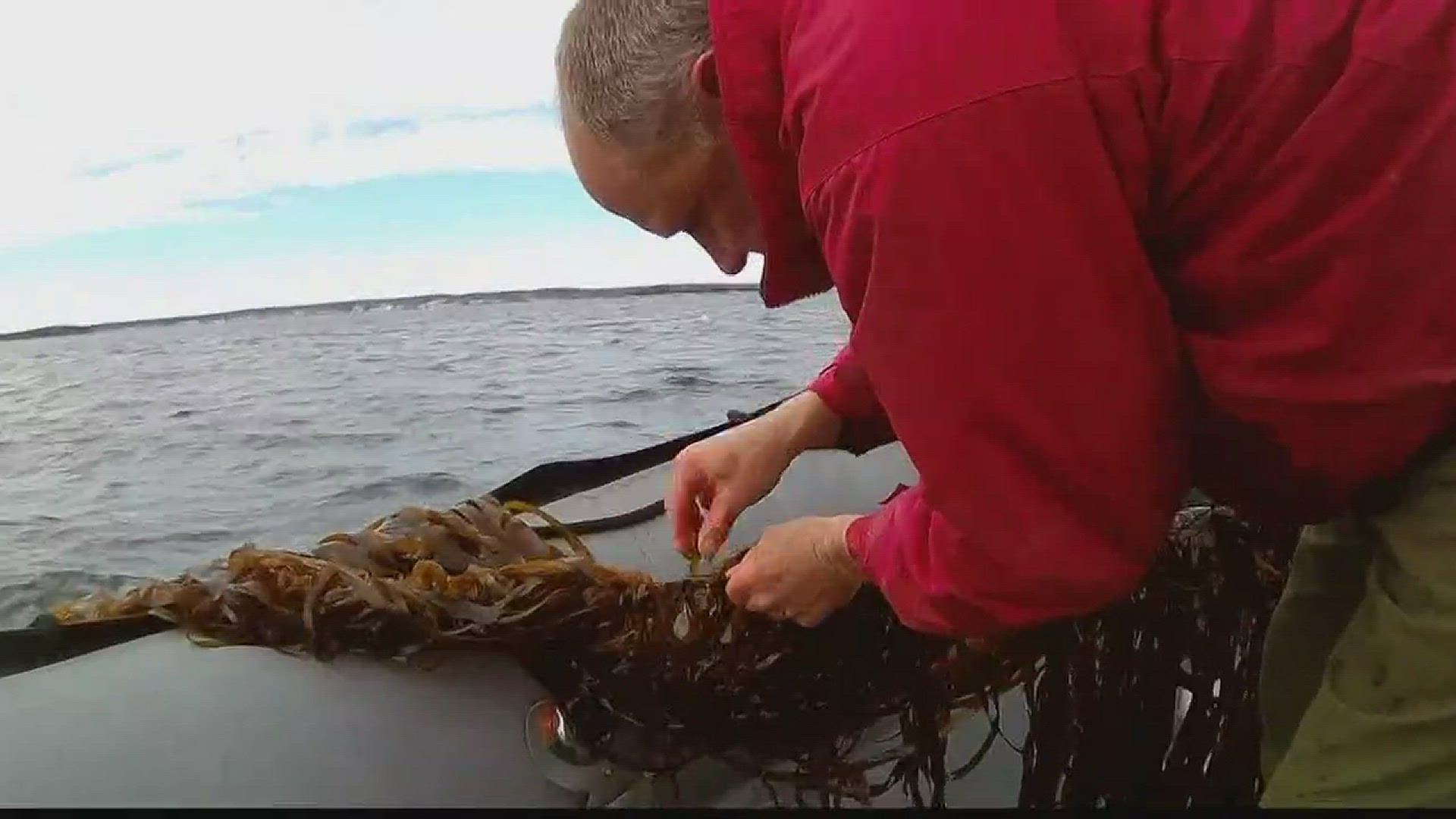FALMOUTH/PORTLAND (NEWS CENTER Maine) -- Kelp farming is still relatively new in the United States. It started within the last ten years, or so. There are less than 40 farms in the United States. More than half of those are in Maine. NEWS CENTER Maine visited one in Casco Bay, about three miles out from the Falmouth Town Landing.
“What’s fabulous about it is, no fresh water, no arable land, no fertilizers, and no pesticides," says Paul Dobbins of Ocean Approved. "All we do is come out and watch it grow.”
Paul Dobbins owns the three-acre kelp farm, which can produce nearly 100,000 pounds of kelp a year.
“We can’t go and buy....kelp seed. It’s not available to us.”
At Ocean Approved, Dobbins and his team had to develop the seed to plant the seaweed. It starts in nurseries on a kite string, before it's moved to a larger string, floating in rows at sea.
“Kelp grows over the winter. There’s higher nitrogen carrying capacity for the water and there’s less microalgae out there that’s taking that nitrogen and phosphorus that they need to grow. Like a green plant.”
The kelp is harvested in the spring.
Dobbins says he’s having a hard time keeping up with the demand.
“A half ounce of this will give you 105% of your daily iodine requirement. To compare that to something else, you’d have to drink 24 ounces of milk.”
That’s why it’s served up in a nutrient-rich salad at Flatbread Company in Portland, which buys kelp that comes straight from Dobbin’s farm.
“It’s a superfood," says Amy Marchessault, manager at Flatbread Co. "So it made sense to me a long time ago to put it on our salad.”
Kelp, veggies, and a homemade ginger dressing complete the dish.
“It’s crunchy and nutty; it’s very mild. I’m not a huge fish fan. I don’t like that fishy taste, and it doesn't have that at all.”

